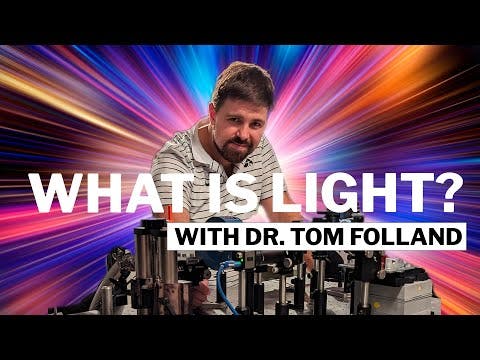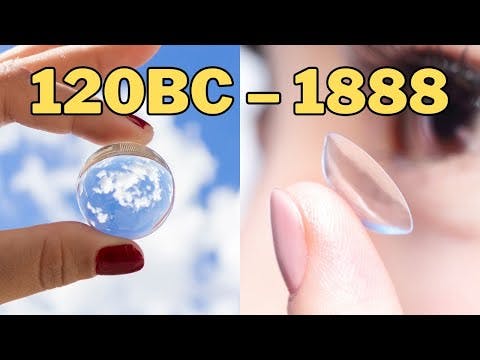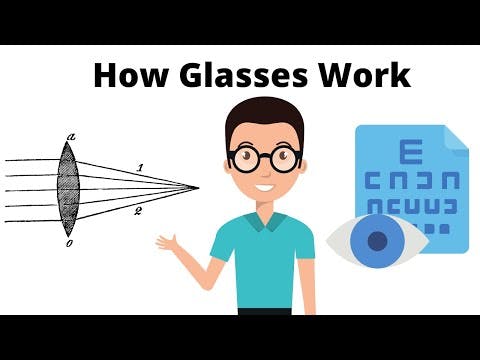- Overview
- Lesson Preview
- Teaching Materials
- Background
- Learning Standards
- Feedback
- Credits
- Acknowledgments
- Version Notes
- Overview
- Lesson Preview
- Teaching Materials
- Background
- Learning Standards
- Feedback
- Credits
- Acknowledgments
- Version Notes
Photon Engineers
Tinkering with Light

Sponsored by:
- Dr. Tom Folland's Lab at the University of Iowa
- National Science Foundation CAREER award, through the division of materials research, grant 2236807
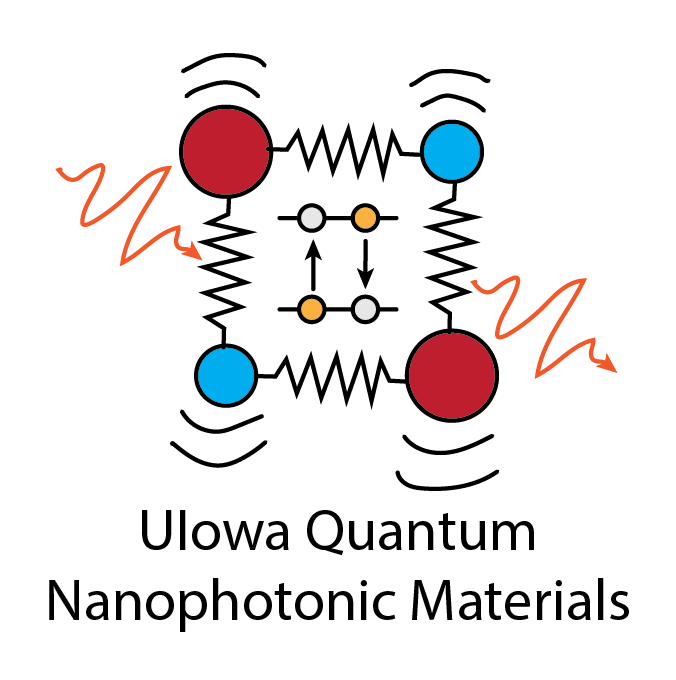
The Gist:
Embark on a journey through time and space to understand what light really is and how humans use it. From starting fires with sunlight to sending messages to other planets to current research in photonics, students will become more curious about light in their daily lives!
Target Subject:
Grades:
Estimated Time:
Target Subject:
ScienceGrades:
6-9Estimated Time:
4 x 45 min classes

Subject breakdown by standard alignments
Driving Question(s):
- How can light be used to measure, transmit, and control information?
- How does light behave in various mediums?
Essential Question(s):
- How has human curiosity driven innovation throughout history?
- What are the benefits and challenges of communicating with light?
Hook(s):
Puzzles, hands-on games, and original illustrations create a dynamic lesson supported by engaging videos.
Keywords:
photonicsopticswavesinformationSTEM“Teach it in 15” Quick Prep
- Check out lesson multimedia below
- Look over Teaching Materials
- Read our easy Procedure
- Teach it and let us know what you think!
What is Light?
Light is both stranger and more interesting than we think. Dr. Tom Folland explains.
Magnification Technologies Timeline Puzzle
This timeline puzzle requires students to think critically as they learn about early optical engineers.
Engineering with Light: 2000 Years of Innovation
This video explores the history of photonics, and introduces the scientific basis of lenses.
How Glasses Work to Correct Vision
More advanced students might be interested in learning how glasses and contacts work to correct vision.
Seeing Through Time worksheet
This worksheet has students to take notes about lens technology and take on an optical engineering design challenge.
What is Light Worksheet
On this worksheet students explore "what is light?" and brainstorm how messages can be encoded in waves.
Communicating with Light Worksheet
Students work as a class to design a code to send messages to Mars.
3 x 45 min
Available Grade Bands
Available Teaching Environments
Learning Objectives
Students will able to...
Students will demonstrate an engineering mindset, using lenses to solve problems through magnification or focusing
Materials for Grades 6-9
Teacher Handout (Lesson 1)
Print 1
Presentation (Lesson 1)
Need: WiFi, Computer, Projector, Sound
Student Handout (Lesson 1)
Print 1 Per Student
Steps & Flow
20 min: Warm Up
20 min: Warm Up
1.Secrets of the Dollar Bill
Secrets of the Dollar Bill
1.Secrets of the Dollar Bill
Secrets of the Dollar Bill
Examine a dollar bill first with bare eyes, then with the magnification of a small water droplet.
Directions and discussion prompts are included in the presentation slides.
20 min: Timeline Puzzle Sort
20 min: Timeline Puzzle Sort
2.Magnification Technologies
Magnification Technologies
2.Magnification Technologies
Magnification Technologies
Read about magnifying devices throughout history and determine when they were invented.
Students will work in small groups to sort the cards in the handout: ➚ Magnification Technologies Timeline Puzzle
3.Answer Reveal
Answer Reveal
3.Answer Reveal
Answer Reveal
Watch the first part of ▶ Engineering with Light: 2000 Years of Innovation to reveal more secrets of the dollar bill, as well as the magnification timeline answers!
5 min: Wrap Up
5 min: Wrap Up
4.Reflection
Reflection
4.Reflection
Reflection
Students can correct their timeline if necessary, and are encouraged to look for lenses out in the world after class.
Going Further
Ideas and resources for deepening learning on this topic.
US Mint Currency Education Program
Have students investigate other interesting facets of different dollar denominations using their liquid lenses.
Learning Objectives
Students will able to...
Students will understand wave properties of light.
Students will interpret data to validate how the properties of waves can be used to transmit information.
Materials for Grades 6-9
Presentation (Lesson 2)
Need: WiFi, Computer, Projector, Sound
Student Worksheet (Lesson 2)
Print 1 Per Student
Teacher Worksheet (Lesson 2)
Print 1
Steps & Flow
30 min: Interactive Videos
30 min: Interactive Videos
1.What Are Lenses?
What Are Lenses?
1.What Are Lenses?
What Are Lenses?
Watch a video about the history and science of lenses and follow along on the student worksheet.
The "What Are Lenses?" video (▶ Engineering with Light: 2000 Years of Innovation) is embedded in the presentation slides with break points for discussion and reflection questions. Students can follow along with the discussion by taking notes on their worksheet: ➚ Seeing Through Time worksheet.
- photonics: The study of manipulating light.
- lens: A piece of material which is transparent and curved, useful for bending light.
- convex: A lens which curves outward on at least one side.
- concave: A lens which curves inward (creating a shallow "cave") on at least one side.
- focal point: The point at which light rays converge after passing through a lens.
2.Challenge: Glasses
Challenge: Glasses
2.Challenge: Glasses
Challenge: Glasses
Extend the knowledge from the lesson to determine how vision should be corrected.
Students discuss in groups to determine what kind of glasses should go to far- or nearsighted people, recording the answers on their worksheets. They check their answer and learn more about corrective eyeware with this video: ▶ How Glasses Work to Correct Vision.
- farsighted: The focal point of the eye falls behind the retina.
- nearsighted: The focal point of the eye falls in front of the retina.
Less advanced students (e.g. G6-7) might not be prepared for these challenge questions.
10 min: Designing a Lens
10 min: Designing a Lens
3.Engineering Mindset
Engineering Mindset
3.Engineering Mindset
Engineering Mindset
Students imagine themselves as optical engineers to consider the design challenges associated with making lenses.
In the space provided on their worksheets (➚ Seeing Through Time worksheet) students answer several reflection questions related to lens design and optical engineering.
5 min: Wrap Up
5 min: Wrap Up
4.Worksheet Review
Worksheet Review
4.Worksheet Review
Worksheet Review
Students ensure they've completed their worksheets.
If needed, students can watch the video again at home to double check their answers.
Going Further
Ideas and resources for deepening learning on this topic.
Geometric Optics
Advanced students (e.g. G8-9) can explore the geometry of light, lenses, and mirrors using this interactive simulation.
Learning Objectives
Students will able to...
Students will understand that light travels differently through various media, depending on the medium's index of refraction.
Materials for Grades 6-9
Presentation (Lesson 3)
Need: WiFi, Computer, Projector, Sound
Student Worksheet (Lesson 3)
Print 1 Per Student
Teacher Worksheet (Lesson 3)
Print 1
Steps & Flow
5 min: Warm Up
5 min: Warm Up
1.Brainstorm
Brainstorm
1.Brainstorm
Brainstorm
A couple quick questions to get students thinking about waves.
20 min: Making Waves
20 min: Making Waves
2.Doing the Wave
Doing the Wave
2.Doing the Wave
Doing the Wave
Linking their arms together, students send messages across the room by transferring a wave!
Students practice creating waves with various amplitudes and frequencies. Detailed instructions are in the teacher key.
3.Anatomy of a Wave
Anatomy of a Wave
3.Anatomy of a Wave
Anatomy of a Wave
It's time to learn about the parts that make up a wave.
The wave activity provides an introduction to waves, defining the pieces of a wave through cooperative body movement. Students follow along by taking notes on their worksheet (➚ What is Light Worksheet).
- wave: a repeating pattern that transfers energy from one place to another.
- amplitude: the height of a wave.
- frequency: the number of complete waves that travels per second.
15 min: Certain-Tier
15 min: Certain-Tier
4.Is It Light?
Is It Light?
4.Is It Light?
Is It Light?
Students rank how certain they are that a phenomenon is or is not light. Then we check in with Dr. Tom Folland via video (▶ What is Light?) to hear how he defines light.
The student worksheet (➚ What is Light Worksheet) has space for students to rank how certain they are about whether or not a light-candidate is light, as well as room to notice similarities or surprises.
- light: electromagnetic radiation which includes the visible spectrum, as well as radio waves, infrared heat, x-rays, and more.
5.What is Light? with Dr. Tom Folland
What is Light? with Dr. Tom Folland
5.What is Light? with Dr. Tom Folland
What is Light? with Dr. Tom Folland
Check in with Dr. Tom Folland via video (▶ What is Light?) to hear how he defines light.
5 min: Wrap Up
5 min: Wrap Up
6.Reflection
Reflection
6.Reflection
Reflection
The presentation uses the Crab Nebula as an example of light radiated at different frequencies.
Going Further
Ideas and resources for deepening learning on this topic.
Waves or Particles? The Double Slit Experiment
Check out this video to see what the average adult knows about light. The Double Slit Experiment introduces students to the central questions of quantum mechanics.
What is Wifi?
Explore videos like this one to dig further into relevant waves like Wifi!
The Work of Hedy Lamarr
Hedy Lamarr was a famous actress and inventor who paved the wave for modern-day technologies such as Wifi and Bluetooth. Check out this lesson plan (G6-8) made by the Women's History Museum to learn more about her contributions to science.
Materials for Grades 6-9
Presentation (Lesson 4)
Need: WiFi, Computer, Projector, Sound
Student Worksheet (Lesson 4)
Print 1 Per Student
Teacher Worksheet (Lesson 4)
Print 1
Steps & Flow
5 min: Warm Up
5 min: Warm Up
1.Review
Review
1.Review
Review
Students quickly share out what they learned about light yesterday.
5 min: Advanced Properties of Light
5 min: Advanced Properties of Light
2.What is Light? Continued
What is Light? Continued
2.What is Light? Continued
What is Light? Continued
The presentation gives a short overview of more advanced properties of light.
- photon: a particle of light
- electromagnetic fields: an invisible field all around us, which oscillates to create light
25 min: Message To Mars
25 min: Message To Mars
3.Secret Codes
Secret Codes
3.Secret Codes
Secret Codes
The fastest way to send a message to Mars is by using light waves-- but how can information be encoded in them?
Students work together to design a code with three simple messages. The activity culminates in sending the secret messages from one side of the room to the other. Detailed instructions for this activity are in the teacher worksheet.
10 min: Wrap Up
10 min: Wrap Up
4.Radio Communication
Radio Communication
4.Radio Communication
Radio Communication
To review wave anatomy, we look at radios as a practical application of encoding and decoding wave signals.
From Morse code, to AM and FM radio, all the way to WiFi and Bluetooth, encoding messages in light has helped us send information faster and farther than ever before. With a nod to actress-inventor Hedy Lamarr, and technology we use every day, this wrap up discussion highlights the prevalence of light-communication all around us.
5.Reflection
Reflection
5.Reflection
Reflection
Lightning review of lessons 3 and 4, and a debrief of the photonics unit.
Going Further
Ideas and resources for deepening learning on this topic.
Radio Communication Problem Set
Have your students calculate the wavelength, frequency and speed of radio waves with this problem set.
Connection to Research
Students participate in engineering and design thinking throughout the mini-unit, putting themselves in the shoes of early optical engineers, taking on design challenges, developing their own methods to encode wave messages, and learning about important photonics applications. The first two units give a basic introduction to the concepts underpinning light, the manipulation of light, and how different types of light can be used. The final module will introduce how material properties can control light, and how this relates to ongoing technological developments. This ties into Dr. Folland’s research about the behavior of light in crystalline materials.
Research Background
Light is one of the most powerful tools we have for understanding the world around us! It helps us see, from visible light to X-rays, and communicate via radio technologies— and, light can tell us about what things are made of.
Dr. Tom Folland studies how light behaves in different materials, and what this behavior can tell us about chemical, electrical and other properties of these materials. All these properties influence the usefulness of materials to create technologies as broad as computer chips, light bulbs, or pollutant sensors. In particular, by observing light in crystalline materials, the Folland group is able to observe light behaving in new ways, differently from in conventional optical materials like glass.
An example is the polariton – which forms when light interacts with a material to create a new state of light. It inherits some of the properties of light, but also takes on some of the properties of the material it is coupled to. For instance, the wavelength of the light can be compressed, or we can make light travel in certain directions. Here is a selection of summaries and scientific papers about Dr. Folland’s work and discipline:
Further Reading:
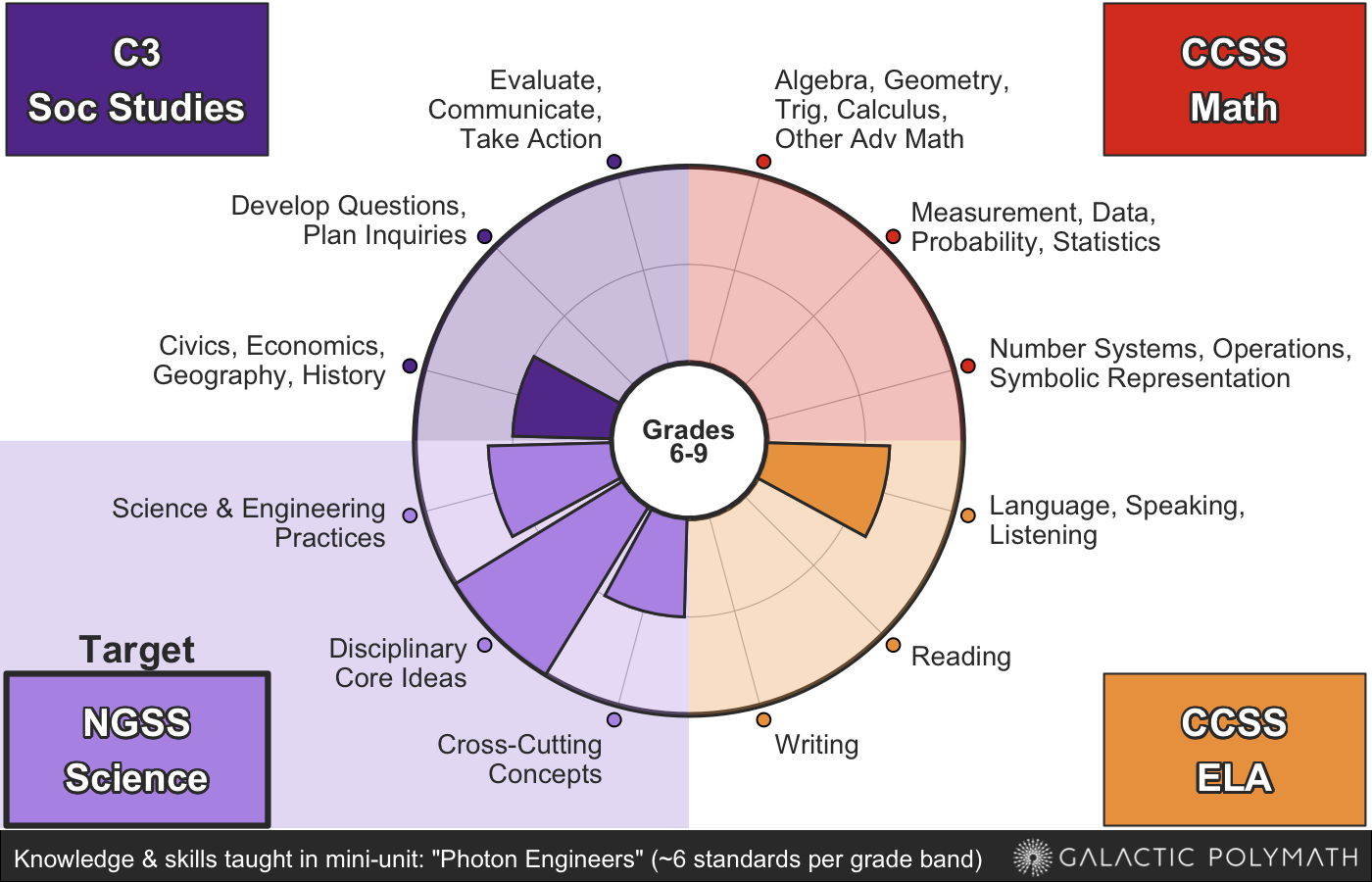
This Galactic Polymath Learning Chart illustrates the areas of knowledge covered. This lesson targets Science, but it helps teach national learning standards in 4 subjects:
- Common Core Math; Common Core ELA; Next Generation Science (NGSS); and College, Career, and Civic Life (C3) Social Studies Standards. In total, there are 26 standards across US grade band(s): 5-6, 7-8, 9-12.
Target Standard(s)
Dimension: Disciplinary Core ideas
How does the lesson address this standard?
Students learn that waves are repeating patterns which transfer energy across space, as well as the anatomy of a wave (including wavelength, frequency, and amplitude).
How does the lesson address this standard?
Students encounter Snell's law, and practice how light bends at interfaces depending on the medium's index of refraction.
How does the lesson address this standard?
Expanding our concept of (visible) light to include the entire electromagnetic spectrum, advanced students learn that light can be described using a wave model or a particle model.
How does the lesson address this standard?
Throughout L2 students are introduced to modern technologies (such as radio, WiFi, and Bluetooth) based on sending and receiving signals which are encoded in light.
Dimension: Cross-Cutting Concepts
How does the lesson address this standard?
Students are prompted to design their own lens from a raw material, taking into account its intended usage, available materials, and manufacturing challenges.
How does the lesson address this standard?
Students are introduced to the wave model of light, and are informed that other models exist to study different aspects of light.
How does the lesson address this standard?
Students are prompted to design their own lens from a raw material, taking into account its intended usage, available materials, and manufacturing challenges.
Connected Standard(s)
Dimension: Language, Speaking & Listening
How does the lesson address this standard?
Students are introduced to vocabularly related to waves and the manipulation of light.
How does the lesson address this standard?
Students are introduced to vocabularly related to waves and the manipulation of light.
How does the lesson address this standard?
Students are introduced to vocabularly related to waves and the manipulation of light.
How does the lesson address this standard?
Students are introduced to vocabularly related to waves and the manipulation of light.
How does the lesson address this standard?
By working in small groups, students will complete the Magnification Timeline puzzle sort. They will discuss the order in which various devices were invented, sharing and debating their historical knowledge to collectively determine a plausible invention timeline.
Dimension: Science & Engineering Practices
How does the lesson address this standard?
Students consider the need for magnification as a design problem to be solved throughout history. In the Magnification Timeline Puzzle, students will think critically about the scientific and technological challenges that would have limited magnification inventions during different eras.
How does the lesson address this standard?
When prompted to design their own lens from a raw material, students will grapple with the challenges of executing their design with limited tools or resources.
How does the lesson address this standard?
When presented with examples of the electromagnetic radiation spectrum, students are encouraged to express surprise or ask questions about phenomena they don't immediately identify as light.
How does the lesson address this standard?
When prompted to design their own lens from a raw material, students will grapple with the challenges of executing their design with limited tools or resources.
How does the lesson address this standard?
When presented with examples of the electromagnetic radiation spectrum, students are encouraged to express surprise or ask questions about phenomena they don't immediately identify as light.
Dimension: Disciplinary Core ideas
How does the lesson address this standard?
When challenged to send a message across their classroom using waves, students will discover that a series of wave pulses is efficient for sending messages. The lesson then connects that many modern signals rely on binary encodings to send digitized signals as wave pulses.
How does the lesson address this standard?
After practicing sending their own messages across the classroom using waves, the lesson turns back to examples of modern technology and digitized signals. Students appreciate that most modern signals are sent via fiber optic cables, WiFi, or satellite, and messages are encoded in binary, as a series of wave pulses.
How does the lesson address this standard?
Students are introduced to the entire electromagnetic spectrum through the context of how they interact with our world. Students learn that some light is visible, some can be absorbed and converted to heat, and ionizing radition is used in devices such as X-ray machines.
How does the lesson address this standard?
L3 will teach students how the wavelength and frequency of light change in various media, in order to preserve the speed of light as a constant.
Dimension: Cross-Cutting Concepts
How does the lesson address this standard?
Students design unique codes that embed messages in waves using frequency and amplitude.
Please let us know how it went with your class!
We want to know what you (and/or your students) think!
Share your feedback in < 5 min with these forms:
- Dri Chiu Tattersfield Led the project; helped develop all lesson materials; co-wrote and produced supporting videos.
- Madelyn, Leembruggen Helped develop all lesson materials; performed in, co-wrote, storyboarded, and produced supporting videos.
- Ella Houlihan Provided feedback and suggestions throughout development of lessons and media.
- Thomas Folland, PhD Defined outreach goals; provided feedback throughout development; provided scientific validation of lesson content.
- Matt Wilkins, PhD Directed the project; helped shape and revise all aspects of the lesson and supporting media
Funding
NSF CAREER Award 2236807, through the Division of Materials Research.
Filmmaker
Edited, scored, and narrated supporting videos.
- Stephanie Castillo, PhD | Digital Multimedia Specialist, Galactic Polymath Nashville, TN
Major Release 1
1.0.0 Major overhaul to break up into 4 lessons based on teacher feedback
February 9,2023
Acknowledgments
Thanks so much to Alexandra Patel & Abigail Mayo for early feedback!
Major Release Beta
0.2.1 Added authors and acknowledgments
January 19, 2023
0.2.0 Updates for finalization
January 15, 2023
0.1.0 Lesson initialized
December 4, 2023

